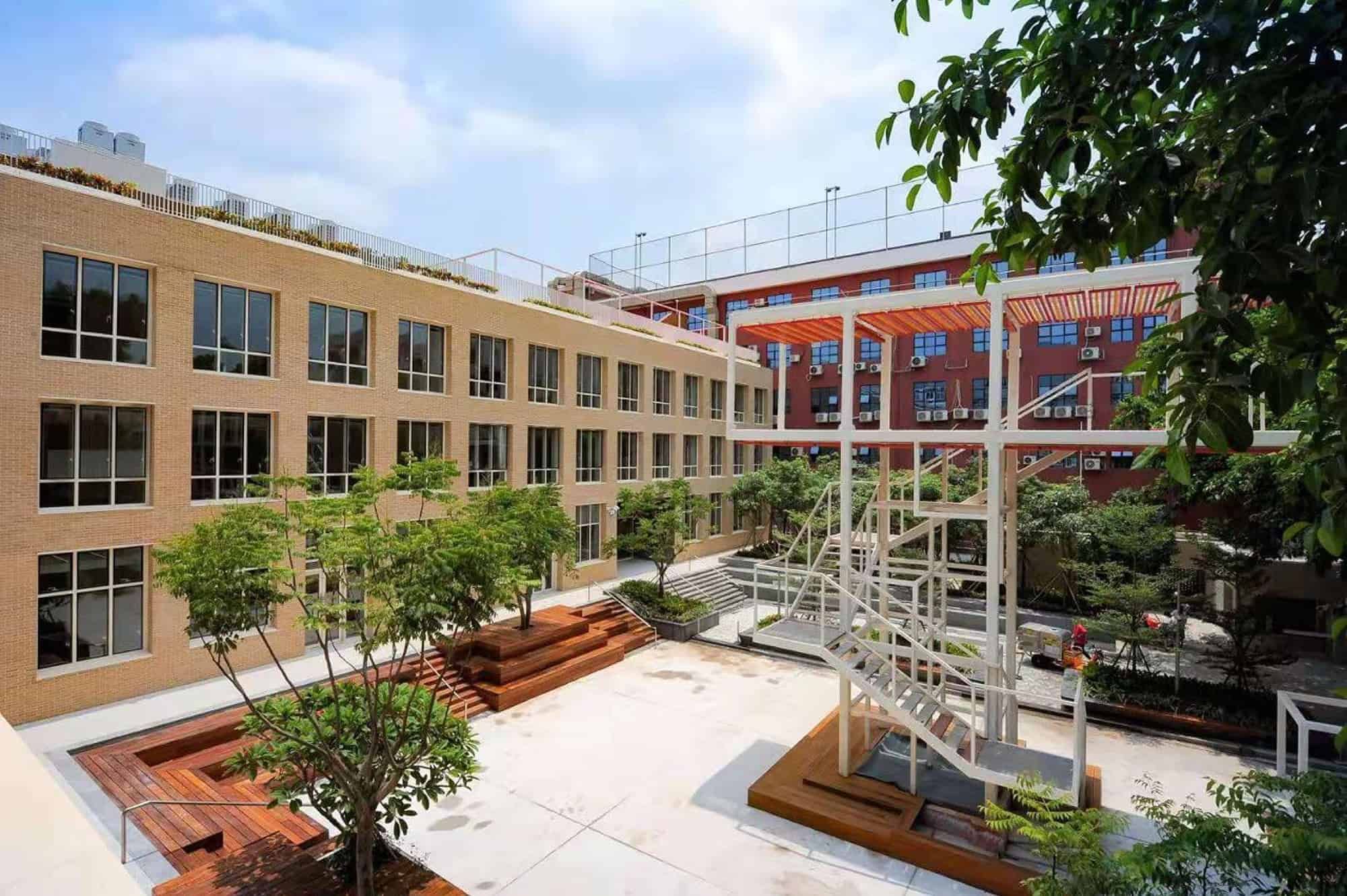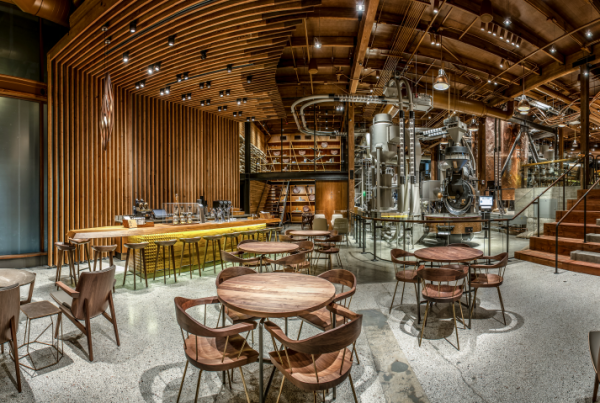សាលា Avenues Beijing ដែលមានទីតាំងនៅទីក្រុងប៉េកាំង គឺជាកិច្ចសហការរវាង RDFZ និង Avenues ដែលត្រូវបានបង្កើតឡើងដើម្បីរួមបញ្ចូលកន្លែងអប់រំចាប់ពីពេលរៀនដំបូងរហូតដល់វិទ្យាល័យ។ គោលដៅរបស់យើងសម្រាប់គម្រោងនេះ គឺដើម្បីបង្កើន Building Performance និងប្រសិទ្ធភាពថាមពល តាមរយៈការវិភាគលម្អិតតាមទីតាំង និង Computational Fluid Dynamics (CFD) simulations។

សាលាអន្តរជាតិ Avenues នៅទីក្រុងប៉េកាំង
Type of Project: Educational
ទីតាំង: Beijing

អំពីគម្រោង
ការពិចារណាអំពីអាកាសធាតុ
ក្រុមរបស់យើងត្រូវបានប្រគល់ភារកិច្ចឱ្យវាយតម្លៃលើយុទ្ធសាស្ត្រខ្យល់អាកាសធម្មជាតិ និងភាពងាយស្រួលនៃកម្ដៅដែលសមស្របនឹងអាកាសធាតុរបស់ទីក្រុងប៉េកាំង ដែលកំណត់ដោយរដូវក្តៅ សើម និងត្រជាក់ រដូវរងាស្ងួត។
- ទីតាំងភូមិសាស្ត្រ៖ ទីក្រុងប៉េកាំង រដ្ឋធានីនៃប្រទេសចិន មានទីតាំងនៅភាគខាងជើងនៃប្រទេស ដែលមានឥទ្ធិពលលើអាកាសធាតុ និងលក្ខខណ្ឌបរិស្ថានរបស់វា។
- សីតុណ្ហភាព៖ សីតុណ្ហភាពរដូវក្តៅជាមធ្យមឡើងដល់ 26.2°C, ខណៈពេលដែលរដូវរងាធ្លាក់ចុះមកជាមធ្យម -3.7°C។ ភាពខ្លាំងទាំងនេះត្រូវការការរចនាដែលលើកកម្ពស់ភាពត្រជាក់ក្នុងរដូវក្តៅ និងកាត់បន្ថយការបាត់បង់កំដៅក្នុងរដូវរងា។
- កាំរស្មីព្រះអាទិត្យ៖ ទីក្រុងប៉េកាំងទទួលបានបទពិសោធន៍វិទ្យុសកម្មព្រះអាទិត្យយ៉ាងច្រើនជាមួយនឹងម៉ោងពន្លឺព្រះអាទិត្យប្រចាំឆ្នាំចាប់ពីឆ្នាំ 2000 ដល់ 3000 ម៉ោង ដែលទាមទារឱ្យមានការពិចារណាលើការគ្រប់គ្រងនៃការកើនឡើងរបស់ពន្លឺព្រះអាទិត្យ។
- ខ្យល់៖ ខ្យល់បក់ភាគអាគ្នេយ៍ដែលលេចធ្លោក្នុងរដូវក្តៅ និងខ្យល់បក់ភាគពាយព្យក្នុងរដូវរងា ជាមួយនឹងល្បឿនខ្យល់ជាមធ្យមប្រចាំឆ្នាំ 1.8-3 m/s គឺមានសារៈសំខាន់ក្នុងការរៀបចំផែនការយុទ្ធសាស្ត្រខ្យល់។
- ទឹកភ្លៀង៖ តំបន់នេះទទួលបានទឹកភ្លៀងប្រហែល 570 មីលីម៉ែត្រក្នុងមួយឆ្នាំ ដោយភាគច្រើនធ្លាក់ក្នុងរដូវក្តៅ។


ការសិក្សាលំហូរខ្យល់តាមទីតាំង
នៅក្នុងការសិក្សាលំហូរខ្យល់តាមទីតាំងរបស់យើង យើងបានផ្តោតលើការវិភាគការចែកចាយនៃលក្ខខណ្ឌខ្យល់ខាងក្រៅ រួមទាំងល្បឿនខ្យល់ វ៉ិចទ័រល្បឿនខ្យល់ សម្ពាធខ្យល់ និងកត្តាពង្រីកល្បឿនខ្យល់នៅទូទាំងបរិវេណសាលា។ តាមរយៈការធ្វើ CFD Simulations យើងបានវាយតម្លៃលើសេណារីយ៉ូនៃប្លង់បាតអគារផ្សេងៗគ្នានិងការកំណត់រចនាសម្ព័ន្ធអគារដើម្បីស្វែងយល់ពីរបៀបដែលកត្តាទាំងនេះមានឥទ្ធិពលលើខ្យល់ចេញចូលធម្មជាតិ និងការវាយតម្លៃកម្ដៅទាំងមូល។
ការចែកចាយល្បឿនខ្យល់
Simulations របស់ពួកយើងបានបង្ហាញថា វត្តមាននៃបណ្តាញខ្យល់បន្ត ជាពិសេសនៅពេលដែលច្រករបៀងសំខាន់ត្រូវបានបន្តបើក បណ្តាលឱ្យមានល្បឿនខ្យល់ខ្ពស់ និងចរន្តខ្យល់កាន់តែប្រសើរ។ ការដំឡើងនេះអនុញ្ញាតឱ្យមានបញ្ចេញសារធាតុពុលកាន់តែមានប្រសិទ្ធភាព និងធ្វើឱ្យប្រសើរឡើងនូវផាសុកភាពកម្ដៅ ដោយរក្សាចលនាខ្យល់ខាងក្នុងកាន់តែប្រសើរ។
ការធ្វើឱ្យប្រសើរវ៉ិចទ័រលំហូរខ្យល់
យើងបានរកឃើញថា ការរក្សាបាននូវបណ្តាញខ្យល់ដែលមិនមានការស្ទះតាមរយៈច្រករបៀង ដ៏សំខាន់ ដែលមានទិសដៅពីត្បូងទៅជើង បានធ្វើឱ្យខ្យល់ធម្មជាតិប្រសើរឡើងយ៉ាងខ្លាំង។ ការកំណត់រចនាសម្ព័ន្ធនេះបានសម្របសម្រួលលំហូរខ្យល់ប្រកបដោយប្រសិទ្ធភាពនៅទូទាំងបរិវេណសាលា ដោយជួយកាត់បន្ថយសីតុណ្ហភាពខាងក្នុង និងកែលម្អភាពងាយស្រួលក្នុងអំឡុងពេលរដូវក្តៅ។
ការបង្កើនប្រសិទ្ធភាពសម្ពាធ
យើងបានវិភាគការបែងចែកសម្ពាធខ្យល់នៅទូទាំងផ្ទៃអគារ ហើយបានកំណត់ថា ការដាក់ជាយុទ្ធសាស្ត្រនៃរបាំងខ្យល់បានជួយក្នុងការគ្រប់គ្រងលំហូរខ្យល់ និងកាត់បន្ថយភាពខុសគ្នានៃសម្ពាធលើស។ វិធីសាស្រ្តនេះកាត់បន្ថយហានិភ័យនៃការជ្រៀតចូលខ្យល់ប្រកបដោយប្រសិទ្ធភាព និងរក្សាបានរចនាសម្ព័ន្ធទាំងមូលប្រឆាំងនឹងបន្ទុកខ្យល់។
អនុសាសន៍
ដោយផ្អែកលើលទ្ធផលនៃការក្លែងធ្វើខាងលើ យើងបានបង្កើតបញ្ជីស្តីពីអនុសាសន៍ដែលមានគោលបំណងបង្កើនប្រសិទ្ធភាព៖
- ខ្យល់ចេញចូលធម្មជាតិ៖ ធ្វើឱ្យលំហូរខ្យល់អតិបរតាមរយៈយុទ្ធសាស្រ្តនៃការរចនានិងប្លង់បាត។
- Building Openings ៖ បង្កើតការបើកចំហជាយុទ្ធសាស្ត្រ ដើម្បីបង្កើនខ្យល់ចេញចូល។
- របាំងខ្យល់ និងលក្ខណៈពិសេសភាពធន់នឹងខ្យល់៖ ការដំឡើងរបាំង និងធ្វើឱ្យប្រសើរឡើងនូវភាពធន់នឹងខ្យល់ដើម្បីគ្រប់គ្រងសម្ពាធខ្យល់ និងការពារការជ្រៀតចូលខ្យល់។
- សម្ភារដែលមានចំណាំងផ្លាតនិងការរចនាទេសភាព៖ ការប្រើប្រាស់សម្ភារៈ និងបច្ចេកទេសរៀបចំទេសភាព ដើម្បីកាត់បន្ថយការស្រូបយកកំដៅ និងធ្វើឱ្យប្រសើរឡើងនូវផាសុកភាពកម្ដៅ។









